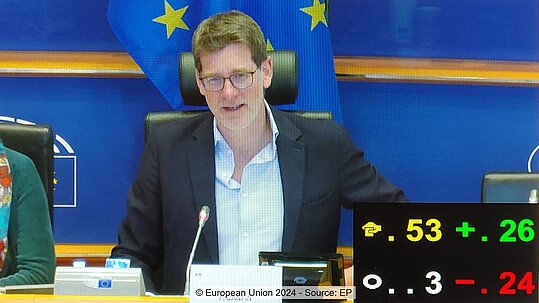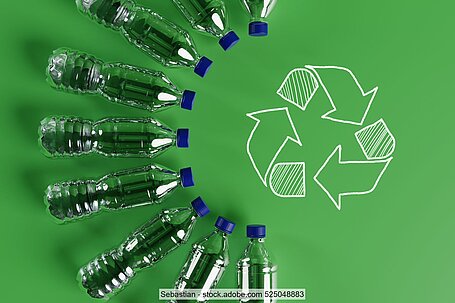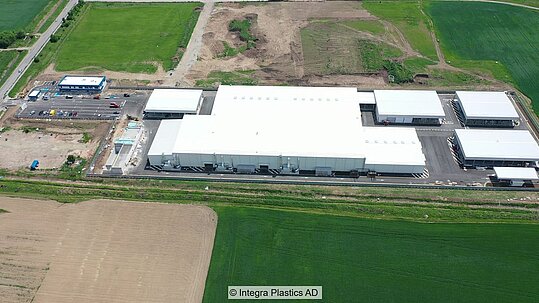
2022 was a year of ongoing uncertainty and substantial volatility in the value chain for PET and recycled PET (rPET). Despite the upheaval, markets for virgin and recycled PET showed signs of staging a recovery to pre-pandemic levels, with progress made in the collection and recycling of PET waste.
That being said, disparities within the EU regarding the separate collection, sorting, and recycling of PET and the use of rPET will have to be addressed if the EU is to meet its medium-term and long-term targets, according to a report entitled "PET Market in Europe — State of Play” published in late March. The report was drawn up by ICIS Consulting on behalf of European umbrella associations representing the plastic recycling industry (PRE and Petcore) and the beverage sector (Unesda Soft Drinks Europe and Natural Mineral Waters Europe). The report covers the 27 EU member states, Norway, Switzerland and the UK.
The report puts the total amount of PET packaging (bottles, sheets/trays and flexible packaging) placed on the EU market at 5 million tonnes in 2022. Some 3 million of the 5 million tonnes had been collected, with bottles accounting for the vast majority of this total (2.8 million tonnes).
The collection rate reached 60 per cent in 2022, compared with 45 per cent in 2020. The proportion of PET beverage bottles sorted for recycling was estimated at 75 per cent, up from 61 per cent in 2020.
Deposit return schemes expected to further raise collection rate
The authors forecast that the collection rate will continue to improve as countries introduce deposit return systems (DRS). In 2022, twelve countries in the region under review already operated DRS schemes, and another nine countries had made the policy decision to introduce a DRS "in the following years”.
Close to 2.7 million tonnes of PET waste were sorted for recycling in 2022. Altogether, the countries in question had 3 million tonnes of total installed capacity to produce flakes out of PET waste. Converters doubled their extrusion capacity to turn flakes into rPET to 1.4 million tonnes.
The report notes that this capacity is enough to meet the 25 per cent minimum recycled content target under the EU Single-Use Plastic Directive (SUPD), which will apply to disposable plastic beverage bottles from 2025 onwards. However, the authors point out that more capacity will have to be added to meet the 65 per cent recycled content target that will apply from 2040 onwards under the current version of the EU Packaging and Packaging Waste Regulation (PPWR).
In 2022, PET bale input to recyclers reportedly reached 2.6 million tonnes, which was seven per cent more than in 2020. Flake production stood at 1.9 million tonnes in the year. 1.2 million tonnes of this total were reprocessed into pellet.
The packaging sector was the leading area of application for rPET in 2022, with 48 per cent used in bottles, 25 per cent in sheet (trays) and the rest in non-packaging applications. This latter category included polyester fibre (15 per cent), strapping (6 per cent) and others (6 per cent).
Operational chemical recycling capacity still minimal
The report puts the installed chemical recycling capacity in operation in the region at just 12,000 tonnes in 2022. Glycolysis processes accounted for 90 per cent of this capacity, with hydrolysis processes making up the other 10 per cent. However, plans for approximately 482,000 tonnes of additional capacity have been announced which are slated to come online by 2027.
The report said that challenges in this sector include the lack of clarity in legislation as it relates to chemical recycling, for instance, as to whether the output from processes are to be included in the calculation of recycled content.
Another challenge is access to the large amounts of input material required "while simultaneously ensuring that competition with mechanical recyclers for feedstocks is minimised". The infrastructure to provide this feedstock has not yet been fully developed, according to the report.
Beverage bottles made out of PET had an average estimated recycled content rate of 24 per cent in Europe in 2022. The rate for trays (sheet) stood at 44 per cent. The authors underscored some significant regional variations here. Both collection and recycling rates were well below the European average in southeastern Europe and in individual countries in Central and Western Europe.
The report also notes that investment and continued cooperation within the value chain will be needed if the the short-term and mid-term goals established under EU law are to be met, let alone any higher ambitions in the market.
Additionally, the authors highlight the need for a balanced market in which the ambition to increase recycled content levels builds in step with the development of the value chain. "For demand to outpace supply at such rates as those seen in early 2022, and the distortion this can create in pricing, creates a risk for the value chain to achieve its goal,” the authors stated. Broadly speaking, rPET prices had increased consistently in the first half of the year on the back of strong demand before falling again in the second half of 2022.



